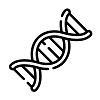9: Photosynthesis
( \newcommand{\kernel}{\mathrm{null}\,}\)
- 9.1: Discovery of Photosynthesis
- The history of the studies done on photosynthesis dates back into the 17th century with Jan Baptist van Helmont. He rejected the ancient idea that plants take most of their biomass from the soil.
- 9.3: Light Stage
- The light stage participants include photosystems (“chlorophyll”), light, water, ATPase, protons, and a hydrogen carrier (NADP+). The basic idea of light stage is that the cell needs ATP to assemble (later) carbon dioxide into sugar. To make ATP, the cell needs electrical current: proton pump. To make this current, the cell needs the difference of electric charge (difference of potentials) between thylakoid (vesicle or membrane pocket) and matrix (stroma) compartments of the chloroplast.
- 9.4: Enzymatic Stage
- The enzymatic stage has many participants. These include carbon dioxide, hydrogen carrier with hydrogen (NADPH), ATP, ribulose biphosphate (RuBP, or C 5 ), and Rubisco along with some other enzymes. Everything occurs in the matrix (stroma) of the chloroplast.
- 9.5: C₄ Pathway
- Rubisco is the enzyme of extreme importance since it starts the assimilation of carbon dioxide. Unfortunately, Rubisco is “two-faced” since it also catalyzes photorespiration. Photorespiration means that plants take oxygen instead of carbon dioxide. Rubisco catalyzes photorespiration if there is a high concentration of oxygen (which usually is a result of intense light stage).
- 9.7: True Respiration
- The common misconception about plants is that their only energy-related metabolic process is photosynthesis. However, as most eukaryotes, plants have mitochondria in cells and use aerobic (oxygen-related) respiration to obtain energy. Typically, plants spend much less oxygen in respiration than they make in photosynthesis. However, at nights plants do exactly the same as animals, and make only carbon dioxide!
Thumbnail: Plant cells with visible chloroplasts (from a moss, Plagiomnium affine). (CC BY SA 3.0 Unported; Kristian Peters).


